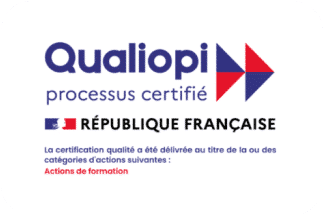Definition of the SCORM standard
SCORM, which stands for Sharable Content Object Reference Model, is a standard primarily intended for learning management system (LMS) platforms used for distance learning. SCORM-compliant standard modules can be imported and exported between LMS platforms, allowing them to be reused. These Content Objects are Sharable, making LMS platforms interoperable.
A number of open source sites now exist that let you generate your own content in the SCORM format.
How has the SCORM standard changed over time?
The SCORM standard has existed end been evolving since e-learning was first introduced, with its original version dating back to January 2001. It is based on the Aviation Industry Computer-Based Training Committee (AICC) standard developed in 1988 with the goal of unifying training design, provision and evaluation in the aviation industry, which was a pioneer in the field of digital training. Although originally intended for the aviation sector, the AICC standard was quickly adopted by other industries before subsequently being abandoned and eventually abolished in 2014, by which time it was considered too obsolete.
Since 2001, the SCORM standard has continuously evolved as new technical challenges have emerged. The successive versions are described in detail on a number of websites. SCORM 1.1 , released in January 2001 to muted success, was the first standard to introduce a format defining a lesson structure.
The standard was improved in October 2001, with SCORM 1.2 incorporating the IMS Content Packaging standard. This made it possible to distribute learning modules including course content and related activities. IMS Content Packaging made it easier to import and export content to and from an LMS platform, and to assemble multiple types of content in the same package. The resulting “Package Interchange File (PIF)” is a ZIP file containing documents in a variety of formats (e.g. HTML, PPT etc.).
In 2011, a new generation of SCORM was created, using the terminology employed by TIN CAN API (which in April 2013 was renamed Experience API or xAPI). This open standard was much more flexible, allowing a host of applications to be integrated. The new standard was no longer limited to standard exchanges between modules, but also supported exchanges with mobile or software applications. The xAPI instructions sent by developers were much broader and defined in a new “subject-verb-object” format that reflected, for example, an action (such as sending a satisfaction questionnaire) performed by someone (Stephanie). In addition, the xAPI standard made it possible to implement comprehensive monitoring when sending and collecting all types of data, which is invaluable for evaluating performance in the context of e-learning courses.
Las but not least, in June 2016, the Advanced Distributed Learning Initiative (ADL) proposed the CMI5 standard as a replacement for AICC. CMI5 can be described as a new LMS standard that combines the best features of SCORM and xAPI: it uses xAPI’s subject-verb-object structure while establishing a certain formal framework with a limited number of instructions or verbs.
Pros and cons of SCORM modules
Judging by the number of SCORM standards, we can see that none of them are “perfect” but each can address specific needs of businesses and training organizations.
Strengths of SCORM format modules
The biggest advantage is the interoperability between these modules, and hence the possibility of migrating from one platform to another (Sharable). This functionality allows the same module to be used on multiple LMS platforms, which reduces costs (as there is no need to port (or technically adapt) modules for the technical specificities of other LMS platforms) and maximizes the lifespan of modules, which can be reused even if LMS platforms undergo rapid change.
SCORM-compliant modules are reusable, accessible to all learners, adaptable, customizable, affordable, sustainable, etc. They are consistent with a sustainable development approach, reducing the technical obsolescence of training modules. By integrating this sustainability, trainers can create richer content for the same budget.
Weaknesses of SCORM modules
Ironically, the interoperability responsible for their success also explains their biggest drawback. The SCORM standard can restrict the work of technical teams, preventing them from implementing new technologies. This standard also presents some drawbacks for LMS platform publishers, which find themselves obliged to provide a SCORM-compliant LMS platform, even if doing so requires additional development and programming costs.
LMS platforms and SCORM standards
The purpose of the SCORM standards is to enable training content to be exchanged between LMS platforms and to standardize content integration. Interoperability between platforms helps to address the challenge of individualizing learning journeys. A growing number of e-learning platforms are espousing the principle of granularized training, in which bite-sized “nuggets” of learning content are shared and assembled into a bespoke training program.

